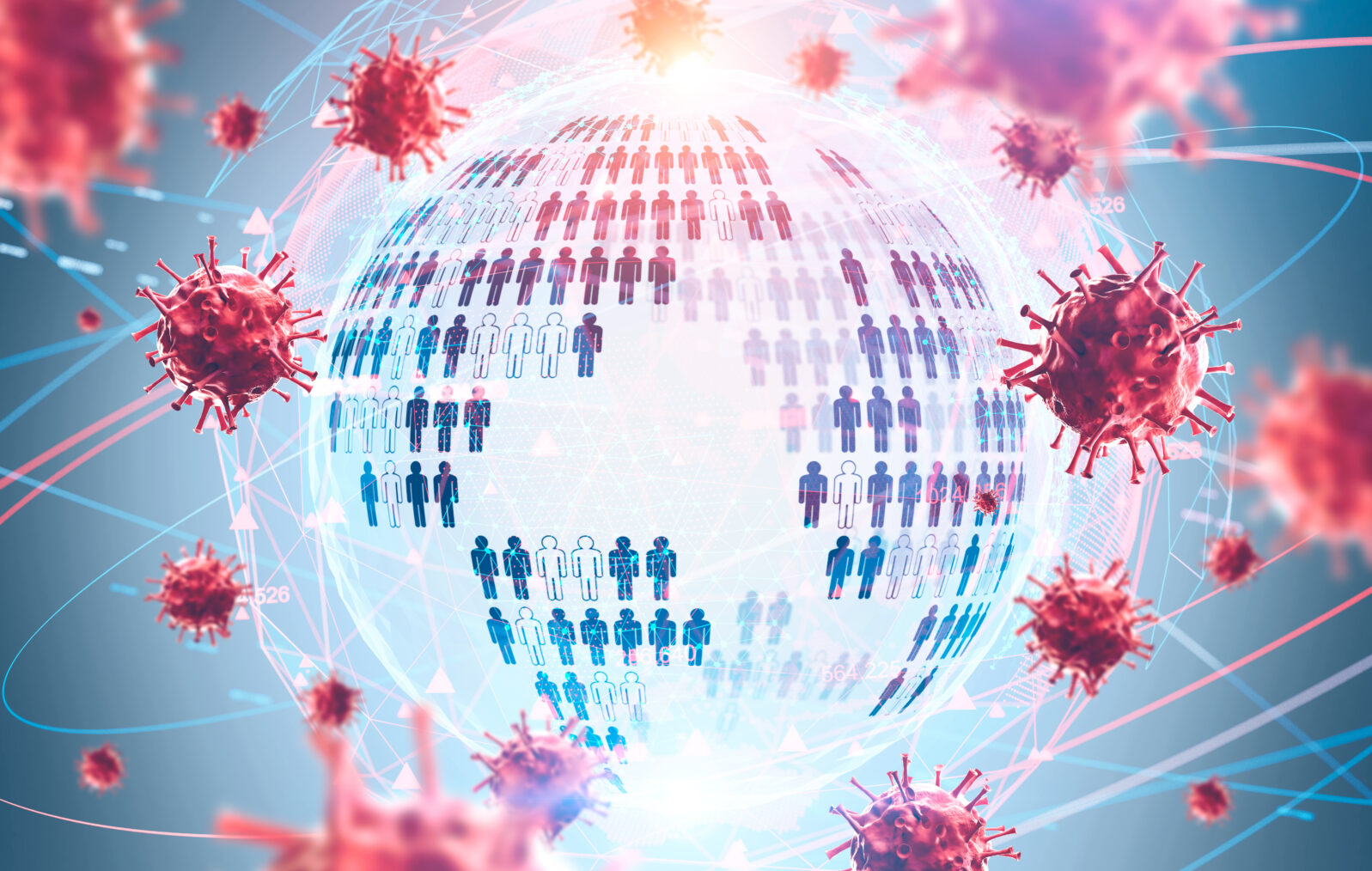Supercomputer Provides a New Clue re COVID-19 Fatalities
A surprising pattern I found last April: Southern hemisphere countries had significantly lower death rates than northern onesBack in April, I ran an analysis on COVID-19 death rates in relation to Earth’s hemispheres. I took the COVID-19 death rate for each country that reported more than 500 cases and plotted its death rate against its latitude.
A surprising pattern emerged: Southern hemisphere countries had significantly lower death rates than northern ones:
That is not a statistical fluke because the graph comprises 198 different countries and the best fit quadratic curve parameters have statistical significance scores of 0.12, 0.07 and 0.0000016 for the x^2, x and c components respectively.
What could explain this pattern?
As I noted at the time, one big difference is that, when it is cold and cloudy in the northern hemisphere, it is warm and sunny in the southern hemisphere. Flu and cold viruses seem to come out during the wintery, cloudy seasons and subside during warmer, sunnier ones. That seems to have happened with Covid-19.
Now, a new report from the Tennessee Oak Ridge National Lab, based on a supercomputer analysis of 40,000 genes related to Covid-19—from 17,000 genetic samples—seems to confirm that.
Summit’s analysis of 2.5 billion genetic combinations took about a week but identified a new lead:
It was, in the words of Dr. Daniel Jacobson, lead researcher and chief scientist for computational systems biology at Oak Ridge, a “eureka moment.” The computer had revealed a new theory about how Covid-19 impacts the body: the bradykinin hypothesis. The hypothesis provides a model that explains many aspects of Covid-19, including some of its most bizarre symptoms.
Thomas Smith, “A Supercomputer Analyzed Covid-19 — and an Interesting New Theory Has Emerged” at Elemental/Medium
Bradykinin is a peptide hormone that regulates blood pressure. It dilates peripheral blood vessels and increases capillary permeability. The report indicates a fascinating new insight into how the virus attacks the body through a bradykinin storm.
Essentially, the virus generally enters the body through ACE2 receptors in the nose and then hijacks body systems so as to produce more and more ACE2 receptors, enabling the entry of more viruses:
In this sense, Covid-19 is like a burglar who slips in your unlocked second-floor window and starts to ransack your house. Once inside, though, they don’t just take your stuff — they also throw open all your doors and windows so their accomplices can rush in and help pillage more efficiently.
Thomas Smith, “A Supercomputer Analyzed Covid-19 — and an Interesting New Theory Has Emerged” at Elemental/Medium
Then the virus prevents ACE from doing one of its usual jobs: degrading bradykinin, So a “a bradykinin storm” ensues:
a massive, runaway buildup of bradykinin in the body. According to the bradykinin hypothesis, it’s this storm that is ultimately responsible for many of Covid-19’s deadly effects…
As blood vessels start to leak due to a bradykinin storm, the researchers say, the lungs can fill with fluid. Immune cells also leak out into the lungs, Jacobson’s team found, causing inflammation.
And Covid-19 has another especially insidious trick. Through another pathway, the team’s data shows, it increases production of hyaluronic acid (HLA) in the lungs. HLA is often used in soaps and lotions for its ability to absorb more than 1,000 times its weight in fluid. When it combines with fluid leaking into the lungs, the results are disastrous: It forms a hydrogel, which can fill the lungs in some patients. According to Jacobson, once this happens, “it’s like trying to breathe through Jell-O.”
Thomas Smith, “A Supercomputer Analyzed Covid-19 — and an Interesting New Theory Has Emerged” at Elemental/Medium
That, in turn, explains why ventilators don’t work nearly as well as expected, the researchers say. By then it’s too late.
How might this information affect treatment? Jacobson’s team also highlights Vitamin D, which is important to immune system health and may help prevent the formation of bradykinin storms Sold over the counter, it has been shown in some studies to help those with Covid-19. At the same time, Vitamin D deficiency is quite common.
How does this relate to my Covid-19 analysis by hemisphere? Well, when it is warm and sunny, people are outside more often and sunshine is an excellent source of vitamin D. That would explain why the Covid-19 death rates were lower in the southern hemisphere at the time of my
analysis: More people were out in the sun absorbing greater quantities of vitamin D.
What can we learn for the future? As fall and winter approach for us in the northern latitudes, maybe it’s time to check that we are getting enough Vitamin D—unless, of course, we can just book a long vacation down south to enjoy the warmth and sun…
For further research, we can redeem the loss of life by analyzing the large quantity of records of Covid-19 death rates for many countries across the year. If the seasonal variation holds up, the information can provide guidance for policymakers, so that they can help people avoid the brunt of future Covid-19 waves.
Further reading: Why does COVID-19 target the northern hemisphere? A graph of death rates by latitude is revealing. First of all, COVID-19 clearly does not target the globe uniformly by latitude.
and
COVID-19: When 900 bytes shut down the world. A great physicist warned us, information precedes matter and energy: Bit before it. The COVID-19 virus contains about as much information as a sticker in What’sApp. But information can be very powerful.
